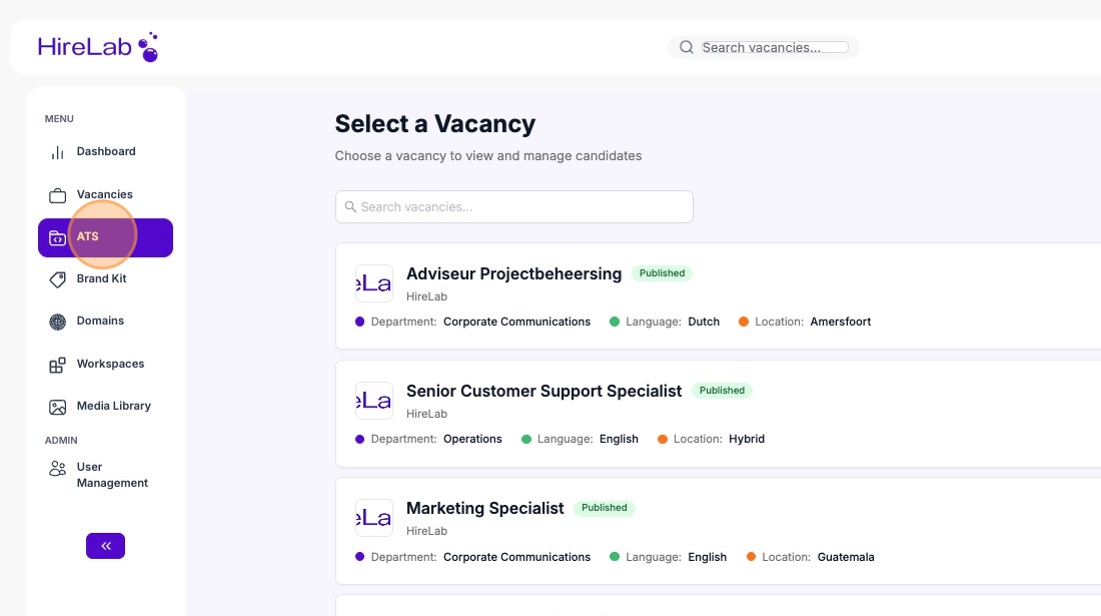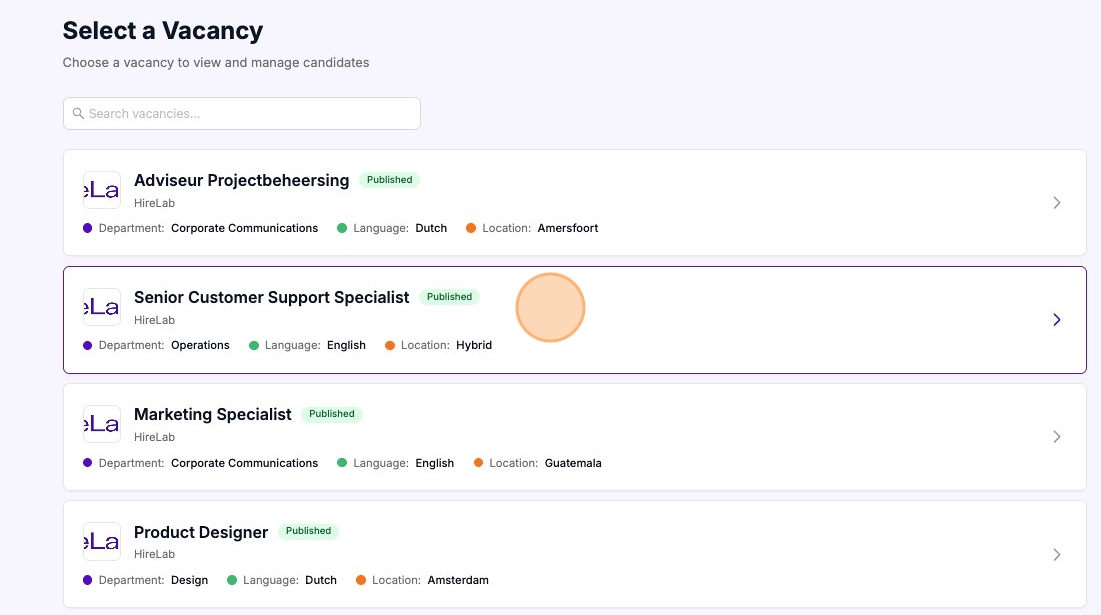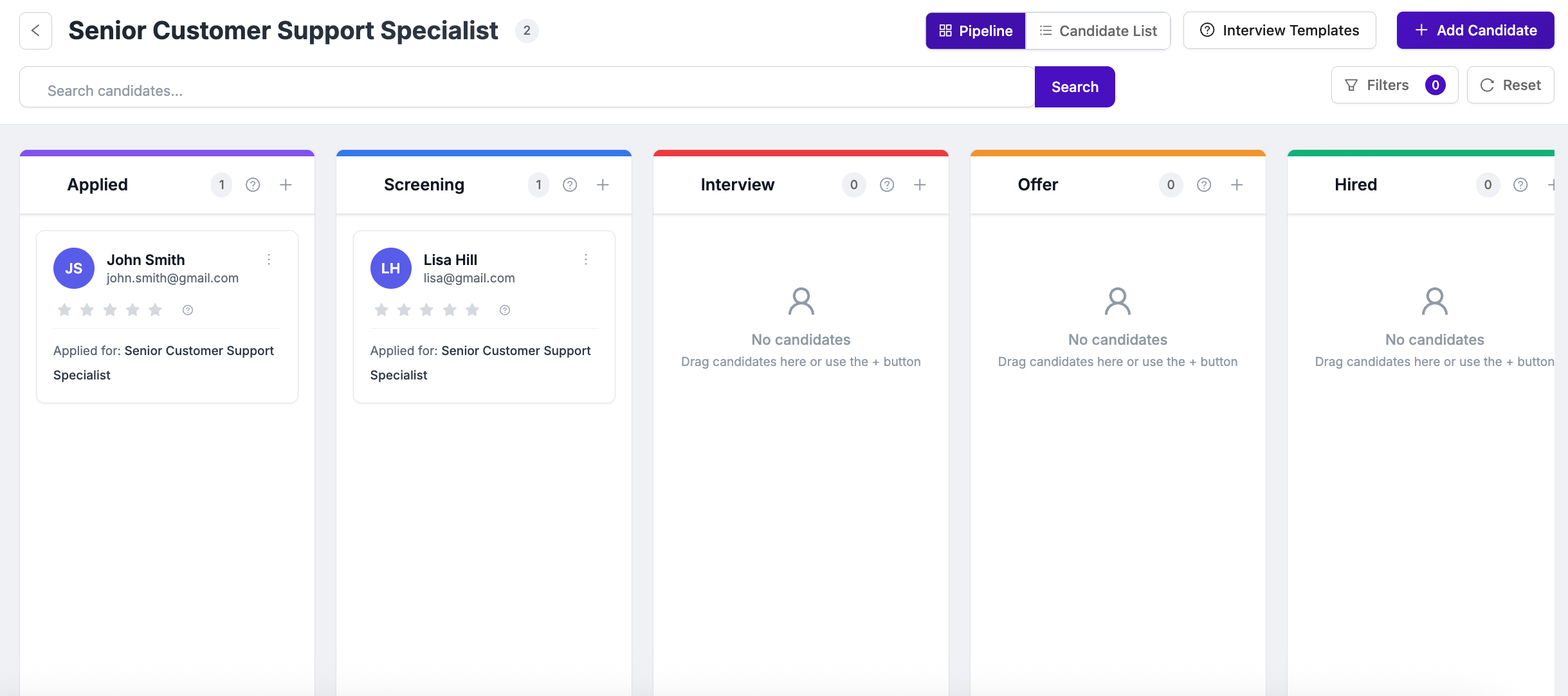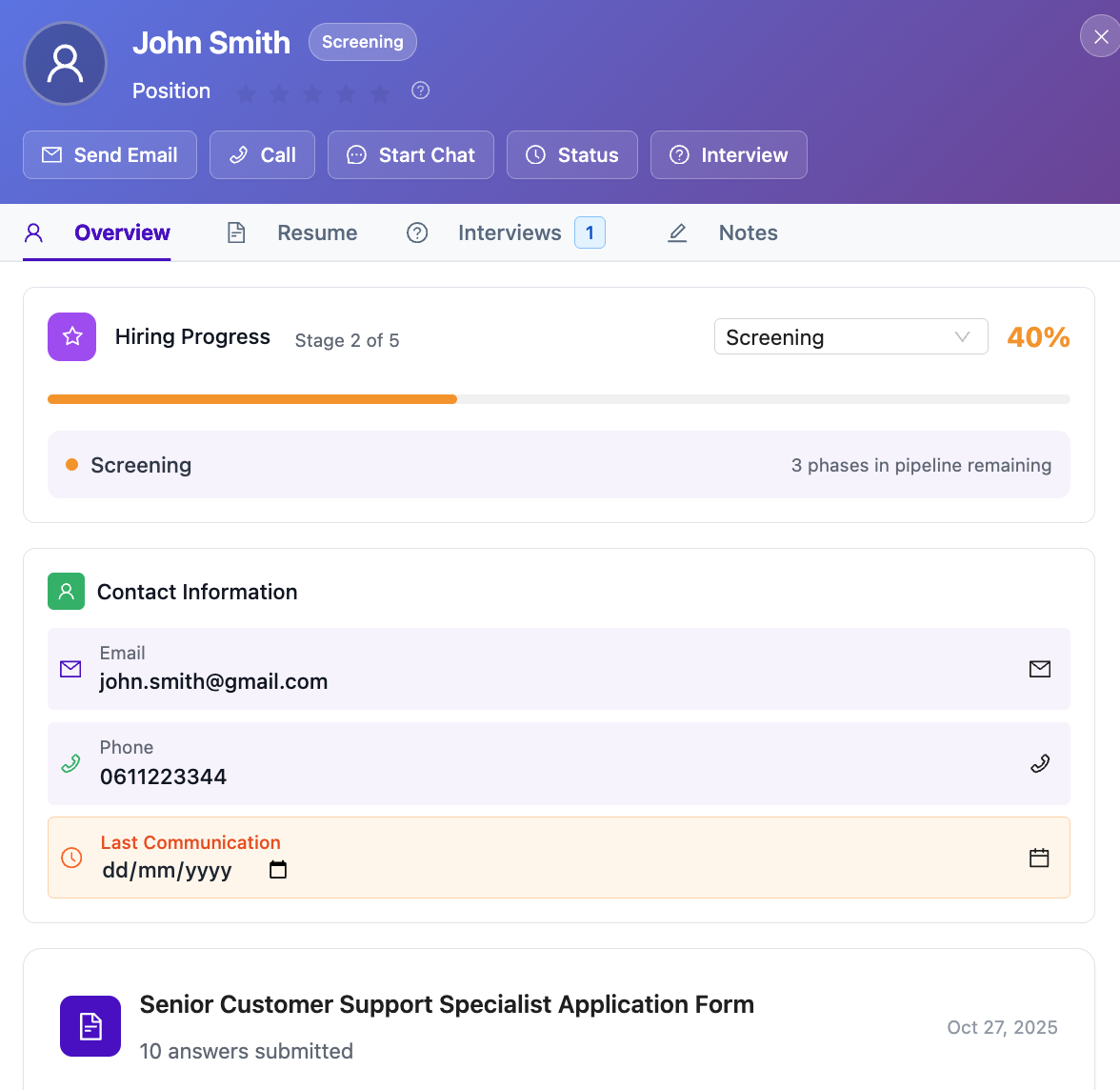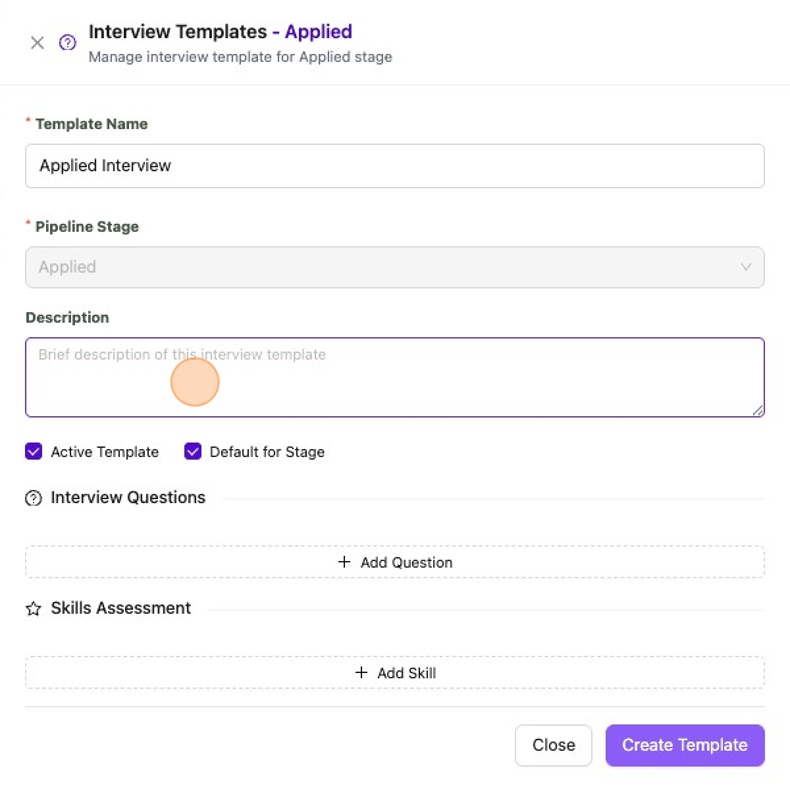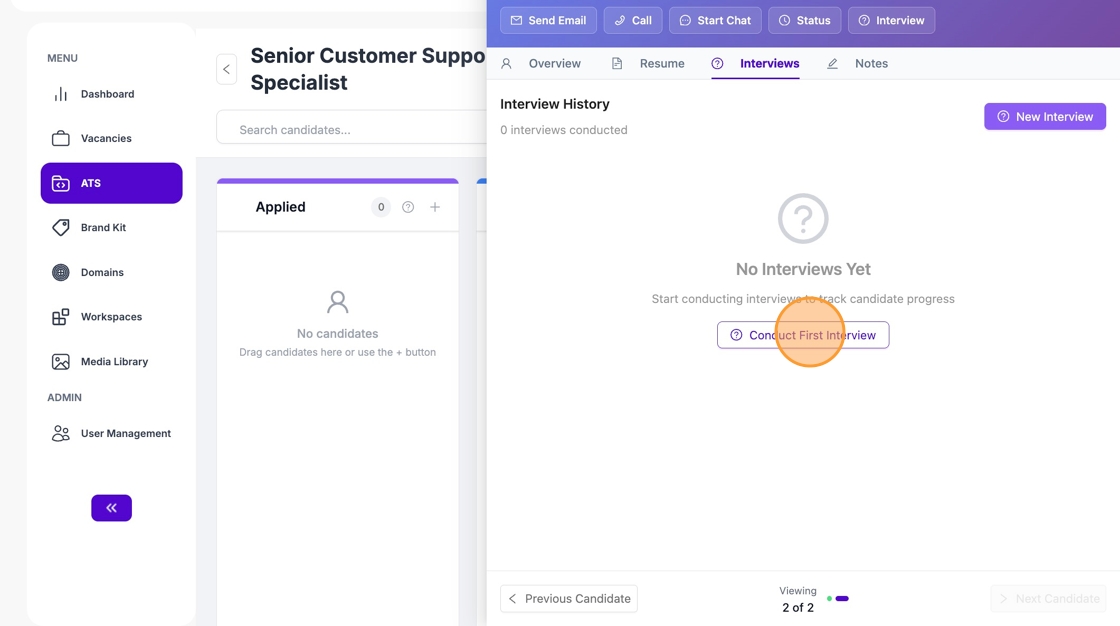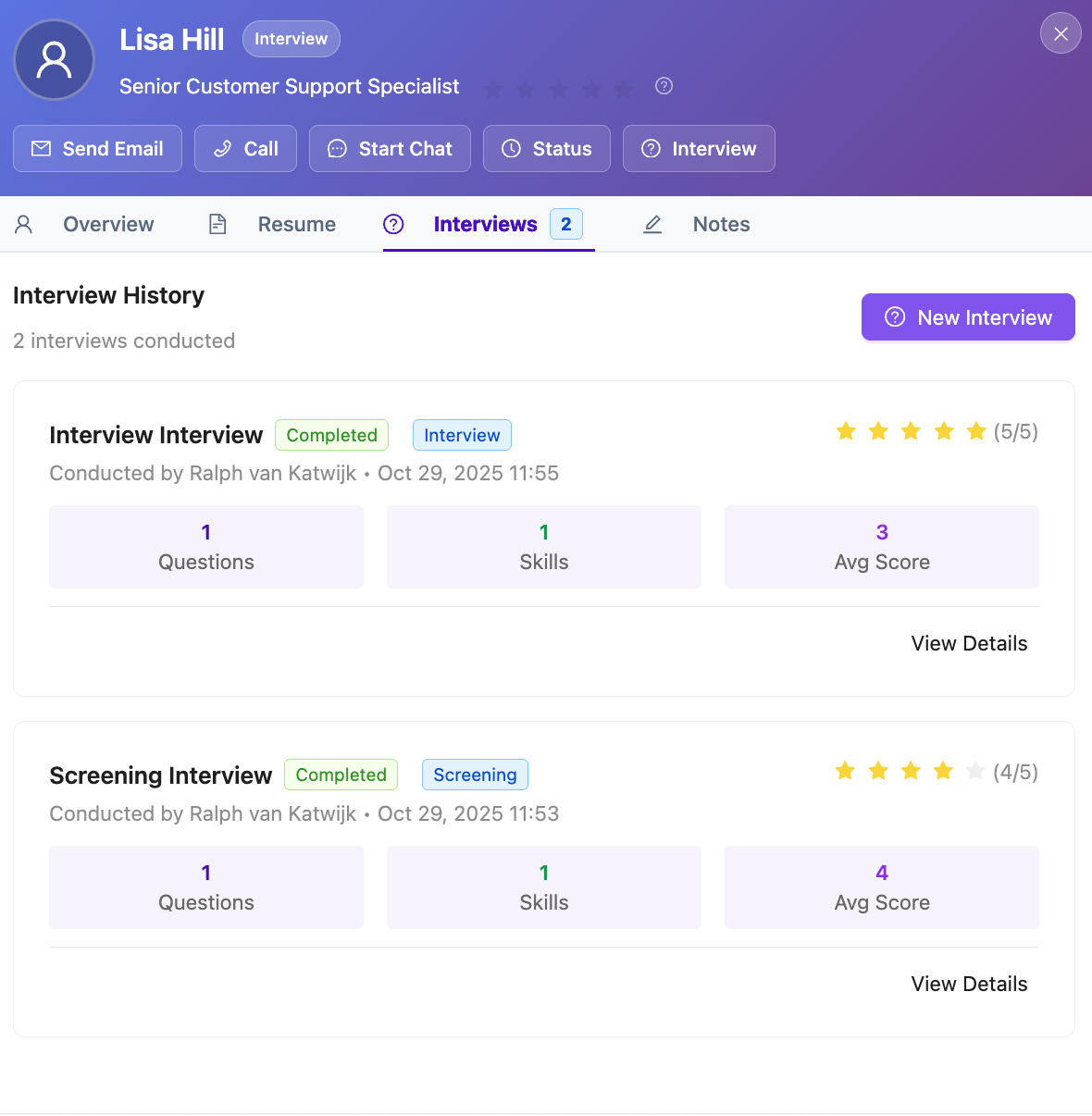ATS – Candidate Relationship Management
HireLab’s native ATS and candidate relationship management system is designed to give you a super clear overview of your candidates, recruitment stages, and interviews, helping you build stronger connections and deliver an exceptional candidate experience.
In this article, you’ll learn how to:
👥 Manage candidates through different recruitment stages
🧠 Create custom interview templates with questions and skills
⭐ Review and assess candidates efficiently
1️⃣ Accessing Your ATS
Click “ATS” in the left-hand menu.
You’ll see an overview of all vacancies you’ve published via HireLab.
2️⃣ Viewing Candidates per Vacancy
Each application automatically appears under the “Applied” column in your ATS dashboard.
3️⃣ The ATS Dashboard
Your ATS dashboard visually displays your recruitment stages — for example:
Applied → Screening → Interview → Offer → Hired
You can:
Rename or reorder stages to match your hiring process.
Add or remove columns to create a customized workflow.
This flexibility makes it easy to align HireLab with your internal recruitment structure.
4️⃣ Candidate Cards
Every applicant has their own Candidate Card, which includes:
👤 Name and contact information
🧠 Answers to Hiring Application Form questions
📄 Uploaded resume/CV
Click a card to open detailed candidate information, review application materials, or add internal notes. This is your central hub for all candidate relationship management activities.
5️⃣ Interview Templates
Structured interviews = better hires.
You can create Interview Templates for each stage of the process:
Click the question mark icon.
Add predefined questions and skills you want to assess.
Click “Create Template” to save it.
These templates ensure every interviewer evaluates candidates consistently and fairly, improving both collaboration and candidate experience.
6️⃣ Conducting & Reviewing Interviews
When conducting an interview, your saved template will appear automatically.
You can:
Record notes and answers directly in HireLab.
Give each candidate a star rating (0–5) for that stage.
View the average star rating across all interviews directly on the Candidate Card.
All interview history remains accessible under the candidate’s profile for full transparency and collaboration.
This makes it easy to compare evaluations, discuss progress, and make data-driven hiring decisions.
7️⃣ Internal Notes
Use the Notes section to share updates or context with your team — ideal for highlighting next steps, red flags, or candidate strengths.
Notes are visible only to your internal team, not to candidates, making it a perfect tool for team collaboration and internal communication.
✅ Pro Tip: Keep your stages, templates, and notes consistent across all roles. This helps you compare performance metrics and maintain a smooth, standardized hiring experience.

